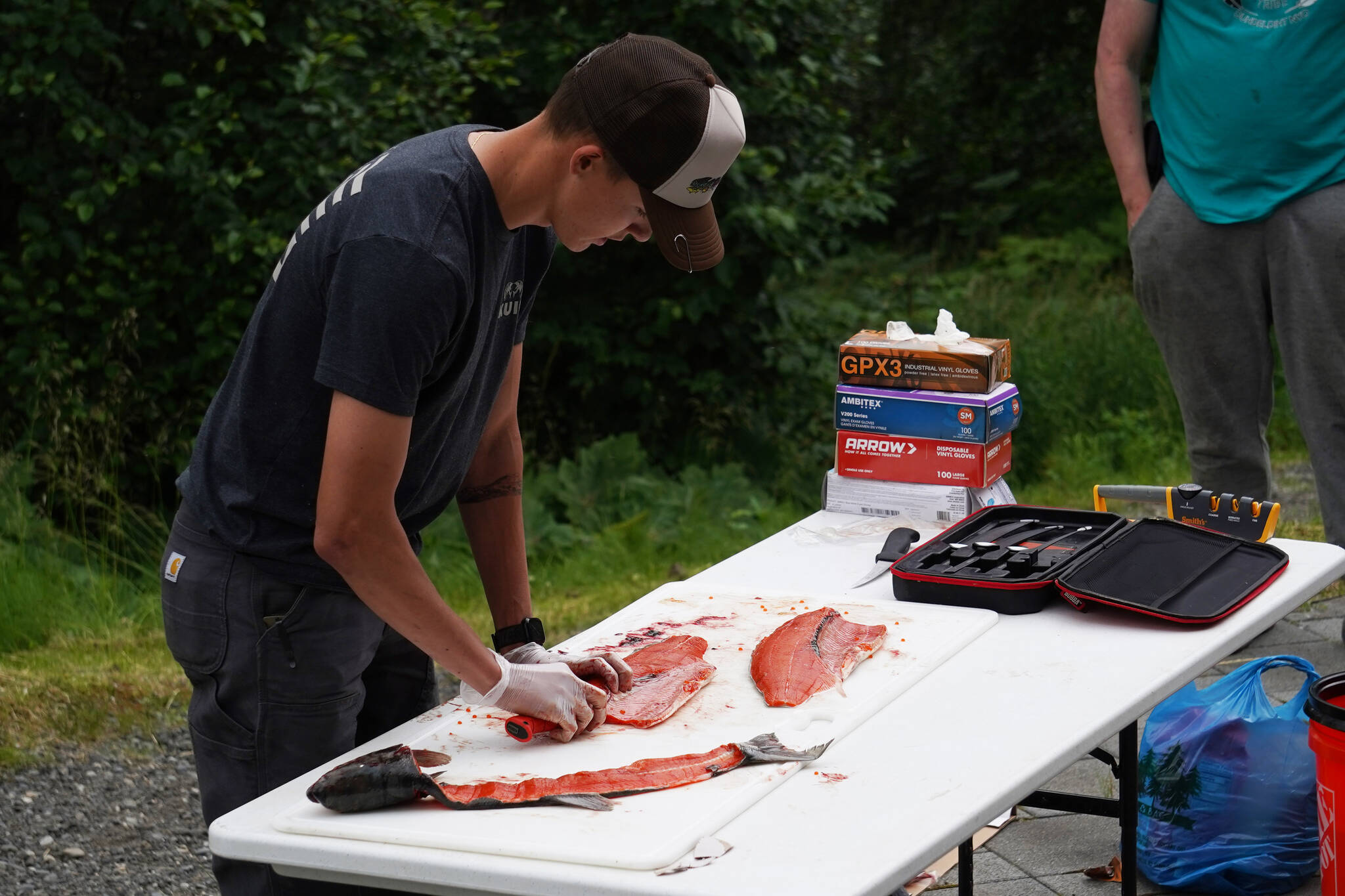There’s more than one way to fillet and smoke a salmon. That was the message of a Dena’ina Salmon Smoking Demo hosted Wednesday at the Kenai National Wildlife Refuge’s Visitor Center by members of the Salamatof Tribe’s Duhdeldiht Youth Services’ summer youth intern program.
The demonstration was part of the refuge’s celebration of Fish Week 2023, which brought a variety of hands-on activities and workshops to the center from Tuesday through Saturday.
The interns and some of their instructors showed off the traditional method of preparing a fish for smoking. They filleted salmon, cut the fillets into strips, hung them on twine and brined them — the product ready to be put into a smoker. They also showed a “modern” technique, as well as a few variations on some of the steps.
Salmon were filleted three ways on Wednesday, first by Ransom Hayes in likely the most familiar fashion, a knife going in behind the gills and riding the spine, then cutting along the ribs to produce the fillet.
Next, Chris Anderson showed a way to do both of the long cuts at once. He removed the fins and head, then cut down the spine and along the ribs, “ribbing the fish” at the same time. He said it’s important to cut as close to the spine as possible, and that if the blade is in the right spot it’ll let out a “click, click, click” along the bones.
James Wardlow showed off an ulu, a traditional blade that would be used to fillet fish. He didn’t intend to put it to work during the demonstration, but Lead Park Ranger Leah Eskelin produced an additional sockeye.
His work with the ulu looked largely similar to the previous techniques shown, separating the head and then removing the fillets from the body — leaving the two sides connected at the tail joint. He prepared the meat for hanging and drying, cutting grooves into the long fillets so the meat stretched like an accordion.
As the fish were filleted, the group also described uses for meat that otherwise would be discarded. Meat scraped from the leftover spine is good for salmon patties, meat from the head for soup.
After the fillets were cut, Marcus Wong cut the meat into lengthwise strips roughly a finger and a half wide. These strips were tied in pairs with tight loops of twine, tail side up, by JaLeen Gattenby. She said that if the strips were hung upside down, they would slip the loop regardless of how tightly they were bound.
The final step was brining the strips in a solution pure enough that a potato would float in it. The group poured salt into a bucket of water until the potato came bobbing up, then submerged the strips for 10 minutes. After that, the strips were dipped in clean water exactly one time, then ready for placement in a smoker.
Sandy Kay, one of the instructors for the internship program, showed a final variation — cutting the fillet into thicker width-wise pieces and placing them in a dry brine — 3 cups white sugar, 2 cups brown sugar, 1 cup salt. Those would need to sit in a refrigerator for 24 hours, but could then be smoked similarly.
After the demonstration, Anderson passed around samples that resulted from two different smoking methods. The distinct smell of smoked salmon filled the outdoor space.
For more information about the Summer Youth Intern Program, search for “Salamatof Tribe Duhdeldiht Youth Services” on Facebook.
For more information about the Kenai National Wildlife Refuge, visit kenai.fws.gov or call 907-260-2820.
This story was edited Saturday, July 22 to correct the recipe for the dry brine.
Reach reporter Jake Dye at jacob.dye@peninsulaclarion.com.

